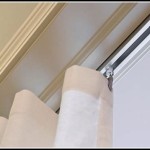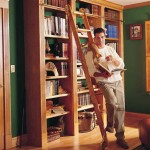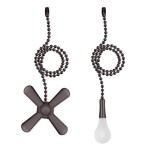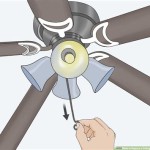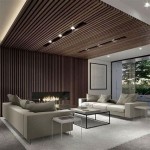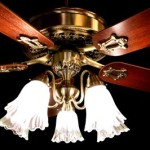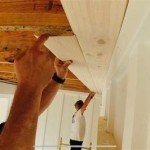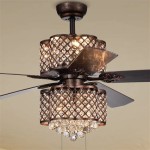Outdoor Ceiling Lighting: A Comprehensive Guide
Outdoor ceiling lighting plays a critical role in enhancing the functionality, safety, and aesthetic appeal of exterior spaces. From providing illumination for outdoor gatherings to deterring potential intruders, these fixtures contribute significantly to the overall ambiance and security of a property. Careful consideration of various factors, including fixture type, light output, and installation requirements, is essential when selecting and installing outdoor ceiling lighting.
This guide examines the different types of outdoor ceiling lights, discusses critical considerations for selecting the right fixtures, provides insights into installation best practices, and explores the future trends shaping the outdoor lighting landscape.
Types of Outdoor Ceiling Lights
The market offers a diverse range of outdoor ceiling lights, each designed to fulfill specific purposes and complement different architectural styles. Understanding the characteristics of each type is crucial for making informed decisions.
Flush Mount Lights: Flush mount lights are installed directly against the ceiling surface, making them ideal for areas with limited headroom. These fixtures are commonly used in covered patios, porches, and entryways where space is a constraint. They offer a low-profile design and are typically available in various styles, from traditional to contemporary.
Semi-Flush Mount Lights: Similar to flush mount lights, semi-flush mount fixtures are mounted close to the ceiling but hang slightly lower, providing more visual interest. They offer a greater design flexibility compared to flush mounts and are suitable for spaces where a subtle decorative element is desired. They are a good compromise between flush mounts and chandeliers, offering both style and practicality.
Pendant Lights: Pendant lights hang from the ceiling using a chain, rod, or wire, adding a decorative touch to outdoor spaces. They are often used to illuminate outdoor dining areas, covered decks, and gazebos. When selecting pendant lights, it’s vital to consider the fixture's overall size and scale to ensure it complements the surrounding environment. Also, consider wind exposure and the potential for swaying.
Chandeliers: Outdoor chandeliers introduce an element of elegance and sophistication to covered outdoor spaces. These elaborate fixtures are ideal for creating a focal point in outdoor living areas and covered patios. Typically, they are much larger than pendant lights and have multiple light sources. Materials resistant to weather elements like moisture and UV rays are essential for durability.
Recessed Lighting: Recessed lighting, also known as can lighting, is installed within the ceiling, providing a clean and minimalist look. It is a versatile option for general illumination and can be strategically placed to highlight specific areas or features. Recessed lighting requires careful planning during installation to ensure proper wiring and weatherproofing.
Track Lighting: Track lighting consists of multiple light heads mounted on a track system. This allows for directional lighting, which can be adjusted to focus on different areas of an outdoor space. Track lighting is a good choice for highlighting architectural features, artwork, or landscaping elements. The flexibility of the track system makes it easily adaptable to changing needs.
Key Considerations When Selecting Outdoor Ceiling Lights
Selecting the appropriate outdoor ceiling lights requires careful consideration of various factors, including the intended use of the space, the architectural style of the building, and the local climate conditions. Failing to account for these aspects can lead to dissatisfaction with the lighting's performance and longevity.
Location and Intended Use: Determine the specific function of the outdoor space that requires lighting. Is it for dining, relaxation, entertaining, or security? The lighting requirements will vary depending on the intended use. For example, a dining area may require a warm, ambient light, while a security area may need bright, focused illumination. The placement of the light fixture is also dictated by its intended use, ensuring optimal coverage of the space. Consider how the lights will function with other outdoor elements to achieve the desired atmosphere.
Light Output and Brightness: Consider the desired level of brightness for the outdoor space. This is often measured in lumens, which indicates the total amount of visible light emitted by a light source. Higher lumens generally indicate a brighter light. The appropriate lumen output will depend on the size of the area and the intended use. Layering different types of lighting can create a more balanced and versatile lighting scheme.
Weather Resistance and Durability: Outdoor lighting fixtures must be able to withstand the elements, including rain, snow, wind, and extreme temperatures. Look for fixtures with a high Ingress Protection (IP) rating, which indicates the level of protection against solid objects and water ingress. Selecting durable materials, such as stainless steel, aluminum, or weather-resistant plastics, is crucial for ensuring the fixture's longevity. Consider the local climate and select fixtures accordingly.
Energy Efficiency: Opt for energy-efficient lighting options, such as LED (Light Emitting Diode) fixtures. LEDs consume significantly less energy than traditional incandescent or halogen bulbs, resulting in lower energy bills and reduced environmental impact. LEDs also have a longer lifespan, minimizing the need for frequent replacements. Look for Energy Star-certified products, which meet strict energy efficiency standards. While upfront costs may be higher, the long-term savings in energy and maintenance make them a worthwhile investment.
Style and Aesthetics: Choose fixtures that complement the architectural style of the building and the overall aesthetic of the outdoor space. Consider the color, finish, and design of the fixtures to ensure they blend seamlessly with the surrounding environment. A cohesive design will enhance the visual appeal of the property and create a welcoming atmosphere. Consider the existing outdoor furniture and decorative elements to establish a unified style.
Control Options: Consider incorporating lighting control options, such as dimmers or sensors, to enhance the functionality and energy efficiency of the outdoor lighting system. Dimmers allow for adjusting the brightness of the lights to create different ambiances, while sensors can automatically turn lights on and off based on motion or ambient light levels. These options can significantly enhance the convenience and cost-effectiveness of outdoor lighting.
Installation Best Practices for Outdoor Ceiling Lights
Proper installation is crucial for ensuring the safety, performance, and longevity of outdoor ceiling lights. Incorrect installation can lead to electrical hazards, water damage, and premature fixture failure. Adhering to best practices and consulting with a qualified electrician is essential.
Safety Precautions: Before starting any electrical work, disconnect the power supply to the circuit at the breaker panel. Use appropriate safety equipment, such as insulated gloves and eye protection. Ensure that all wiring connections are properly insulated and grounded. If unfamiliar with electrical work, it is best to hire a qualified electrician. Safety should always be the top priority.
Wiring and Connections: Use appropriate wiring for outdoor applications, such as UF (Underground Feeder) cable, which is designed to withstand moisture and UV exposure. Ensure that all wiring connections are secure and properly sealed to prevent water ingress. Use weatherproof wire connectors and junction boxes. Follow local electrical codes and regulations.
Mounting and Support: Ensure that the ceiling structure is capable of supporting the weight of the light fixture. Use appropriate mounting hardware, such as screws and anchors, to securely attach the fixture to the ceiling. Consider the weight and size of the fixture when determining the appropriate mounting method. For heavier fixtures, additional support may be required.
Weatherproofing: Properly seal all gaps and openings around the fixture to prevent water from entering the electrical components. Use weatherproof caulk or sealant to create a watertight barrier. Ensure that the fixture is properly rated for outdoor use and can withstand exposure to the elements. Regular inspections can help identify and address any potential water damage issues.
Testing and Inspection: After installation, test the light fixture to ensure it is functioning correctly. Verify that all wiring connections are secure and that the fixture is properly grounded. Inspect the installation for any potential hazards, such as exposed wires or loose connections. If any issues are identified, address them immediately.
Permits and Codes: Check local building codes and regulations to determine if a permit is required for installing outdoor ceiling lights. Comply with all applicable codes and regulations to ensure a safe and legal installation. Failure to obtain necessary permits can result in fines or other penalties. Local codes may dictate specific requirements for wiring, grounding, and weatherproofing.

Outdoor Ceiling Lights Choosing The Right One Wipro Lighting

The Complete Outdoor Light Sizing Guide Design Inspirations Lights Com Blog

The Complete Guide For Wiring Garden Lights Billyoh Com

A Comprehensive Guide To The Best Ceiling Lights Designs For Your Home

Outdoor Lighting Ideas And Advice For Patio Options Hunker

The Ultimate Guide To Outdoor Lighting How Many Lumens And Watts Do You Need Govee

Ledrise High Performance Led Lighting Guide To Choosing The Right Color Temperature For

Where To Position Lights On The Ceiling Key Designs Detail Lighting

Ledrise High Performance Led Lighting Lines Of Light With Strips

Outdoor Lighting Guide The Home Depot
Related Posts

